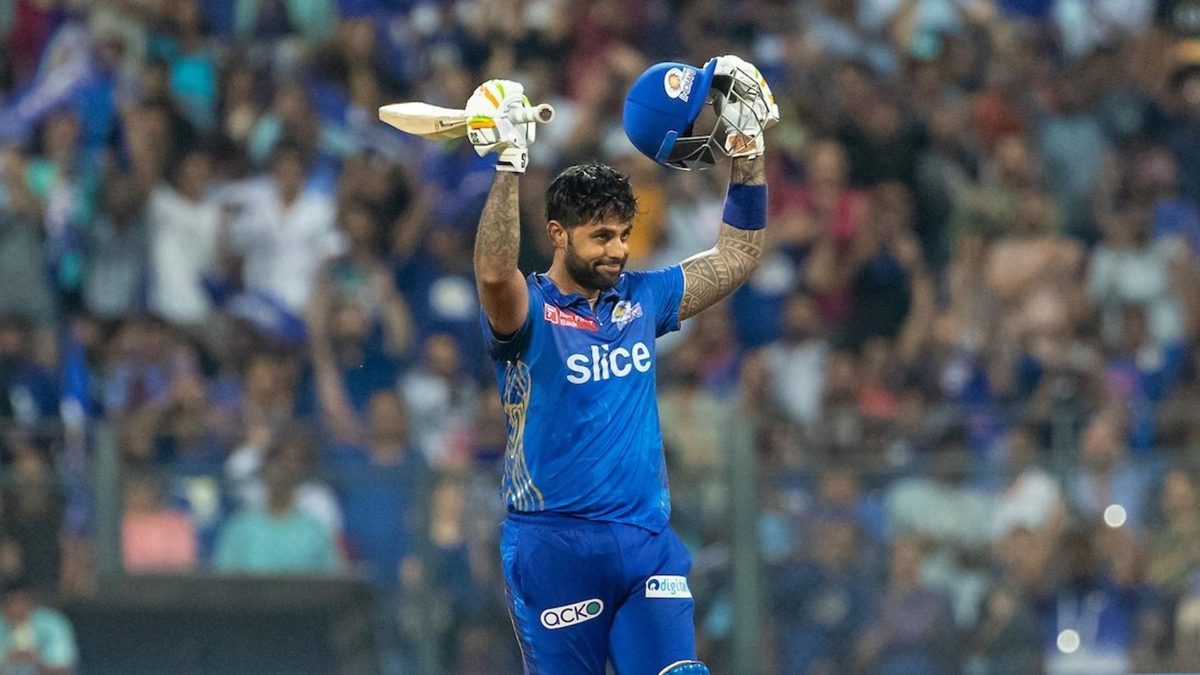
Following a brief slump, partly in longer formats, Suryakumar Yadav has established himself yet again as a legend of Twenty20 cricket, writes Abhishek Mukherjee.
Suryakumar Yadav had come into 2023 on the back of the greatest year by anyone in men’s T20Is. Not only did he make 1,164 runs – one of only two instances of a batter reaching four figures – but he also struck at 187 (the most by anyone with 500 runs) and averaged 46.56.
To sum up, he kept scoring at an absurd rate without getting out.
In 2023, he started with 267 runs in six T20Is at home, against Sri Lanka and New Zealand, at a strike rate of 153 – electric by anyone’s standards but his own.
But before that, the selectors had decided to make the most of his stunning form and gave him a break in ODIs. This posed a problem, for though he averaged 65.25 after six matches, he managed only 15.63 across the next 14.
The selectors now went the extra, perhaps unnecessary, step of giving him a Test cap against Australia when Shreyas Iyer was injured. He made eight, and fared absurdly in the ODI series that followed: he faced, missed, and got out to the first ball he faced every time.
There were two ways to look at the slump. While he made three golden ducks in three innings, it was also a case of the bowler having the better of him across three balls. Critics chose the former – even if the formats he had failed in were not the one that had made him a superstar.
Then began the IPL.
The knives sharpened when he made 15, 1, and 0 in his first three matches. There was some redemption when he made a 25-ball 43 to help Mumbai Indians chase 186 against the Kolkata Knight Riders, but then, he made only seven in the next match.
After five matches, his aggregate stood at 66 runs. Some invariably added the four matches against Australia – ignoring that they were played in a different format – and the numbers read 74 in nine innings. Was this the beginning of the end, some wondered.
Surya plays T20, again
To succeed as a Twenty20 cricket batter invariably involves risk, which means that the ones with the highest scoring rates invariably go through a phase in their career where they get out frequently several times in a row.
The turnaround began against Punjab Kings. Chasing 215, Mumbai were 84-2 when Suryakumar stepped out to blast a 26-ball 57. In the next match, against the Gujarat Titans, he slammed a 12-ball 23 – after coming out at 45-3 in pursuit of 208.
The two efforts – which amounted to 80 runs at over two runs a ball – were buried by the fact that Mumbai lost both matches. At six points from seven matches, things did not look good for them.
Yet again Mumbai got an excellent start, this time against Rajasthan Royals. Emerging at 76-2, Surya blasted a 29-ball 55: while slightly slower than the effort against Punjab, it resulted in a win, though Surya’s resurgence was overshadowed by Tim David’s blast.
He followed this with 66 in 31 balls in the return match against Punjab, this time chasing 215. From four innings, all while chasing targets in excess of 200, his aggregate read 201 in 98 balls – still over two a ball. The worries about his lack of form lay forgotten.
The Chennai Super Kings match on the slow Chepauk track provided a different challenge. Surya’s 22-ball 26 was in tune with Mumbai’s insipid effort in an afternoon when Nehal Wadhera (125.5) was their fastest batter.
On a truer pitch, Mumbai found themselves chasing 200 again – this time exactly that number, against the Royal Challengers Bangalore. Rohit Sharma fell in the fifth over, which meant that Mohammed Siraj and Josh Hazlewood were done with their first spells. With Wanindu Hasaranga in the act, Mumbai promoted Surya to No.3.
Surya responded with a 35-ball 83, making a mockery of the 10-an-over target. Against a stronger Gujarat attack, Mumbai sent him to No.3 again, this time against Rashid Khan. This time Surya made 103 not out in 49 balls.
Surya had started the season with four failures in five matches. It took him seven innings to burst into the top three run-scorers of the season. His 479 runs in 2023 are his best after his 512 in 2018 – but those runs had come at 133.
At 191, this is his best strike rate in a single IPL season – as is his average of 43.55. As with T20Is in 2022, he is scoring at breakneck pace without getting dismissed.
In fact, across all Twenty20 cricket, his 2023 numbers (average 49.73, strike rate 175) are very similar to what he did in 2022 (46.96 and 176). He has been plundering runs the same way.
The curious case of ‘clutch’ matches
A point often made about Surya is his inability to perform when it “matters the most”. Such situations are obviously difficult to classify, more so in Twenty20 cricket, where batters have to adopt a high-risk approach irrespective of the ‘importance’ of the matches.
If the knockout stage in ICC trophies are considered ‘clutch matches’, Surya has played only one of these, against England in the 2022 T20 World Cup semi-final, where he made a 10-ball 14 – a sample size too small to comment on.
Six months down the line, his pyrokinetics have helped Mumbai win four matches in five. From the bottom half of the points table, a few defeats away from being eliminated, they now sit comfortably at third place.
If that is not performing in a clutch situation, what is?








